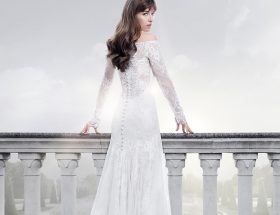
# The Enduring Charm of Vintage Diamonds
## Introduction
Vintage diamonds are historical gemstones that were crafted prior to the emergence of contemporary cutting methods. Unlike modern diamonds, which are expertly cut for optimal brilliance in artificial lighting, vintage diamonds were crafted to shimmer gracefully in candlelight. Their broader facets and more organic shapes lend them a gentle, romantic allure that continues to enchant jewelry enthusiasts.
These classic diamonds are witnessing a revival in interest, with both naturally sourced and lab-created options available. Their distinct appeal, rich history, and eco-friendly nature position them as a coveted choice for collectors and modern brides alike.
## Popular Varieties of Vintage Diamonds
Vintage diamonds are available in various distinctive styles, each representing the artistry of its era. The art of diamond cutting traces back to the 15th century, starting with the **point cut**, a straightforward style aimed at retaining as much of the rough diamond as feasible.
### Rose Cut
Among the earliest styles, the **rose cut** originated in the 16th century. It boasts a flat base with triangular facets forming a rounded top, producing a gentle, understated sparkle. This timeless design makes it a preferred choice in vintage jewelry, exuding delicate and refined charm.
### Old Mine Cut
The **old mine cut**, favored during the 18th and early 19th centuries, displays a cushion-like silhouette with a diminutive table, elevated crown, and deep pavilion. These diamonds were cut by hand, leading to slightly uneven shapes that contribute to their distinct character.
### Old European Cut
By the late 19th and early 20th centuries, the **old European cut** developed as an advancement of the old mine cut. This rounder design featured a larger table and enhanced symmetry, improving light reflection. It laid the groundwork for the modern round brilliant cut, which is prevalent in today’s diamond industry.
## Structure of a Round Brilliant Cut Diamond
The contemporary **round brilliant cut** has evolved from vintage diamond styles such as the old European cut. It is comprised of five primary components:
– **Table**: The smooth, polished surface at the top that allows light to enter.
– **Crown**: The angled facets surrounding the table, channeling light inward.
– **Girdle**: The broadest part of the diamond, separating the crown from the lower section and providing structural integrity.
– **Pavilion**: The lower part of the diamond, where facets reflect and transmit light upward, creating brilliance.
– **Culet**: A small facet or point at the bottom that safeguards the diamond from chipping.
The round brilliant cut, refined by **Marcel Tolkowsky** in the early 20th century, optimizes light performance, making it the most sought-after diamond shape today.
## Major Distinctions Between Vintage & Contemporary Diamonds
Vintage diamonds differ from modern diamonds in several significant respects:
– **Cutting Methods**: Vintage diamonds were hand-cut, resulting in unique pieces, while modern diamonds are machine-cut for accuracy.
– **Facets & Luster**: Vintage diamonds feature fewer, larger facets that emit a softer glow, perfect for candlelit settings. Modern diamonds, with their many small facets, generate a striking brilliance under artificial illumination.
– **Symmetry**: Vintage diamonds often display slightly irregular shapes, enhancing their nostalgic allure. Contemporary diamonds are crafted with precise symmetry for optimal sparkle.
– **Culet Size**: Numerous vintage diamonds possess a notable culet, appearing as a small circle or hole at the bottom. Modern diamonds typically feature a tiny or absent culet, elevating their sleek, polished aesthetic.
## Resurgence in Contemporary Jewelry
Vintage diamonds are regaining popularity in modern jewelry, as an increasing number of individuals appreciate their distinctive charm and historical relevance. Certain modern diamond cuts draw inspiration from these antique styles:
– **Cushion Cut**: A contemporary interpretation of the old mine cut, incorporating soft, rounded edges and broad facets that heighten its vintage allure.
– **Moval Cut**: A fusion of the elongated oval shape and the pointed ends of a marquise cut, producing a graceful, lengthening effect on the finger.
While many vintage diamonds are indeed antiques, today’s jewelers can recreate these classic-inspired cuts using current technologies. This provides the essence of old-world artistry while enhancing symmetry and brilliance.
## Conclusion
Vintage diamonds present a timeless sophistication that continues to enthrall jewelry aficionados. Their unique hand-cut facets, rich historical context, and romantic glow render them a treasured option for both vintage and modern adornments. Whether choosing an original antique diamond or a newly crafted vintage cut, these gems offer a distinctive and sustainable choice compared to contemporary diamond cuts.
As interest in vintage and eco-conscious jewelry flourishes, vintage diamonds remain a beautiful and significant choice for those who value history, craftsmanship, and individuality.





